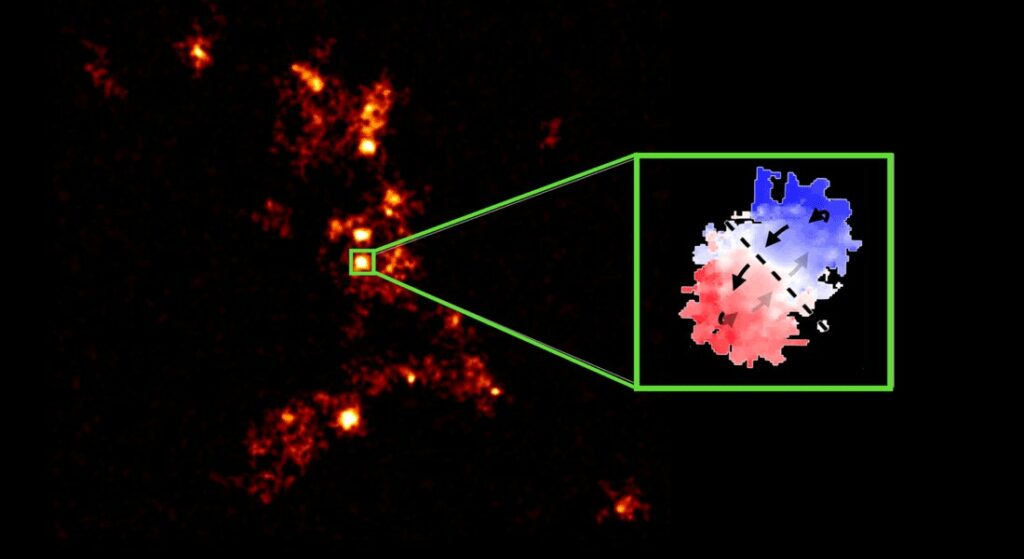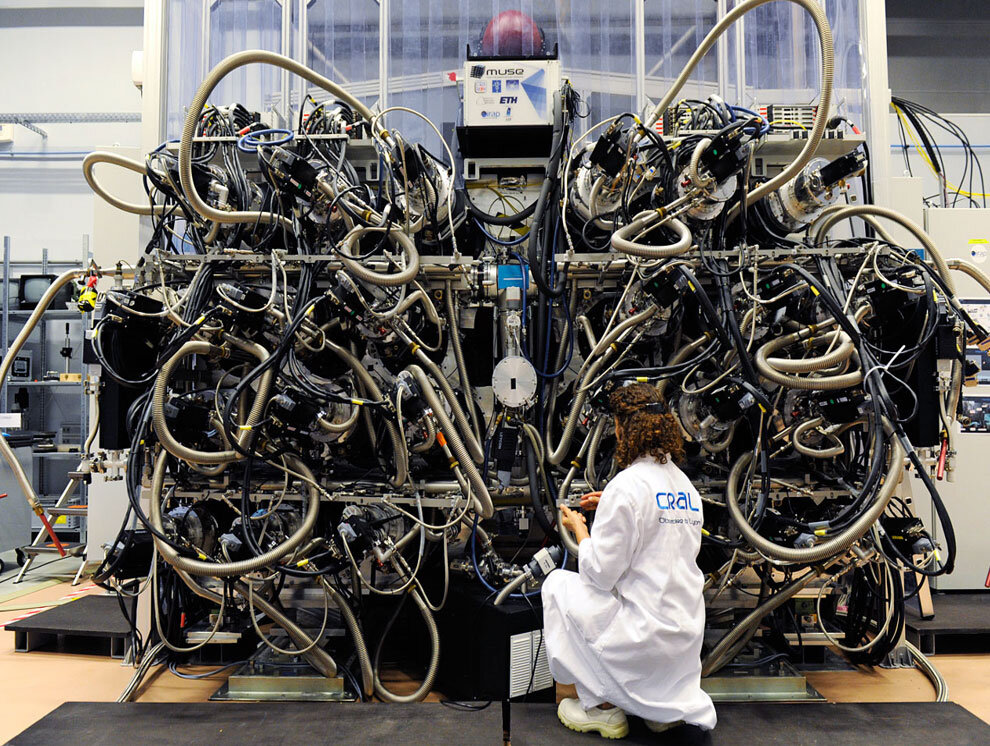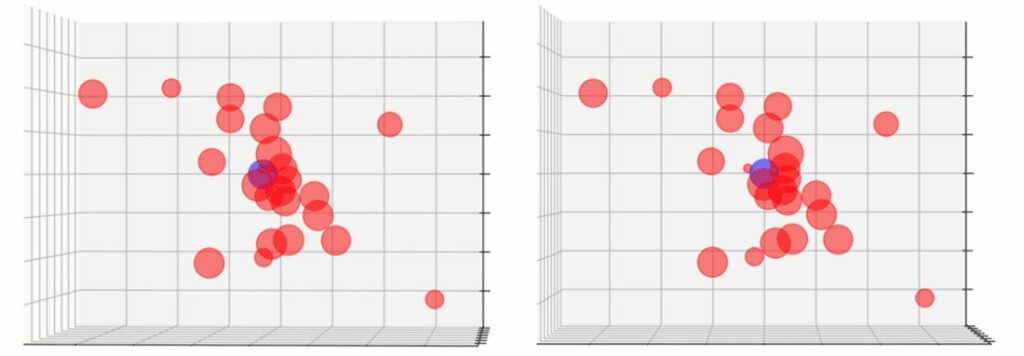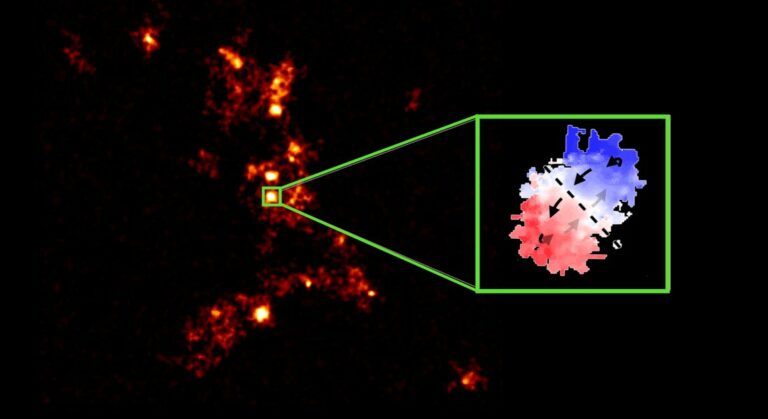A swarm of galaxies circling a hyper-luminous galaxy are found by astronomers.
A team of astronomers led by scientists from the Niels Bohr Institute has found a swarm of galaxies orbiting the environs of a hyper-luminous and actively star-forming galaxy in the early universe using the Very Large Telescope and the radio telescope ALMA in Chile. The finding offers crucial hints as to how extremely brilliant galaxies develop and transform into intense quasars that radiate light throughout much of the cosmos that can be observed.

How galaxies emerge, develop, and evolve is a central problem in astronomy.
Most galaxies appear to nurture a supermassive black hole at their center as a component of their evolution. The phenomena known as a quasar occurs when these gravitational monsters sometimes ingest neighboring gas and stars while simultaneously ejecting extra energy as strong jets.
From galaxy to quasar
There are still many unanswered questions regarding the change from “regular” galaxies to quasars. But in a recent research that was published in Nature Communications, a group of astronomers from ESO, Garching, led by Michele Ginolfi, may have made progress in comprehending this development.
Some galaxies are considered to go through a phase of being highly dusty, and quite “active” in terms of star formation and the accretion of gas onto their central, supermassive black holes, before maturing into a full-blown quasar, according to Ginolfi. To better understand this moment of transition, “we set out to conduct an experiment.”
Ginolfi and his associates concentrated on a known galaxy, W0410-0913, one of the most massive, luminous, and gas-rich galaxies in the furthest reaches of the cosmos, spotted 12 billion years ago.
The energy from the center black hole and stars heats the dust, making it shine and revealing the galaxy through its infrared light. Due of this, these galaxies are known as hot dust-obscured galaxies (also known colloquially as “hot DOGs”).

Galaxies in 3D
Ginolfi and his team, whose core was rather unusually composed largely of early career scholars, chose to examine W0410-0913 using the “MUSE” instrument at the Very Large Telescope (VLT) in Chile because the evolution of galaxies is inextricably associated with its surroundings. They were able to examine a region that was 40 times larger than the galaxy itself thanks to this cutting-edge equipment.
The Copenhagen Cosmic Dawn Center’s Peter Laursen participated in the inquiry. He explains: “The findings revealed that W0410-0913 is surrounded by at least 24 dwarf galaxies. The MUSE technology is extraordinary because it allows us to calculate both their distance from us and their position in reference to the sky. Or, to put it another way, we can figure out where they are in 3D.”
Even while this suggests that W0410-0913 lives in an area that is at least ten times denser than the rest of the cosmos, this is not altogether surprising because hot DOGs are known to thrive in crowded areas.
A galactic car crash
W0410-0913 is also ten times as enormous as the Milky Way, despite having been discovered when the universe was only an eighth of its present age. It does need a considerable amount of new material to feed a supermassive black hole and grow a galaxy that enormous in such a short period of time. All of this is consistent with the widely accepted theory that giant galaxies expand through the accretion of gas and satellite galaxies that are drawn by their strong gravity from intergalactic space.
In fact, it is predicted that galaxy contacts and mergers will occur at a very high rate in such a crowded environment. The researchers predicted that W0410-0913 would be a vehicle wreck of chaotically swirling clusters of gas and stars if it were subjected to such a bombardment.
However, Ginolfi and his associates were able to quantify the internal velocity of the gas inside W0410-0913 by examining past observations made by the ALMA radio antennas, which are just 300 km to the north-east of the VLT.
And from this perspective, a whole new image appeared.

Throwing pebbles at a glass pane
Surprisingly, W0410-0913 does not appear to have been at all perturbed by interactions with neighbor galaxies, according to the ALMA measurements. The findings show that the gas around the center black hole spins beautifully and in a systematic manner. Orderly, yet incredibly quick, exceeding 500 km/s.
“When we combine the data from the two very distinct telescopes, we may observe a possible evolution of the most massive and dusty galaxies. These galaxies, which are an essential step in the transformation from a dusty, star-forming galaxy to a quasar, often evolve in extremely crowded settings, “Ginolfi declares. “However, despite the frequent merger with other galaxies that is predicted, these gravitational interactions are not always harmful; they feed the center galaxy and slightly swirl the gas while essentially leaving it unharmed. Similar to how you wouldn’t break a sturdy glass window by putting tiny stones against it…”
The findings of Michele Ginolfi provide the first information on the multi-scale processes that have shaped the evolution of the unusual and extreme population of hot, dust-obscured galaxies. They thrive in crowded, unique environments, but they can get along well with their neighbors.
The research almost didn’t happen at all when Michele Ginolfi got stopped in a traffic congestion in Rome and had to submit the application using his phone from his car, minutes before the deadline. This incident served as a metaphor for this extraterrestrial collision.
Source: Phys.org
Do not forget to share your opinion with us to provide you with the best posts !





0 Comments